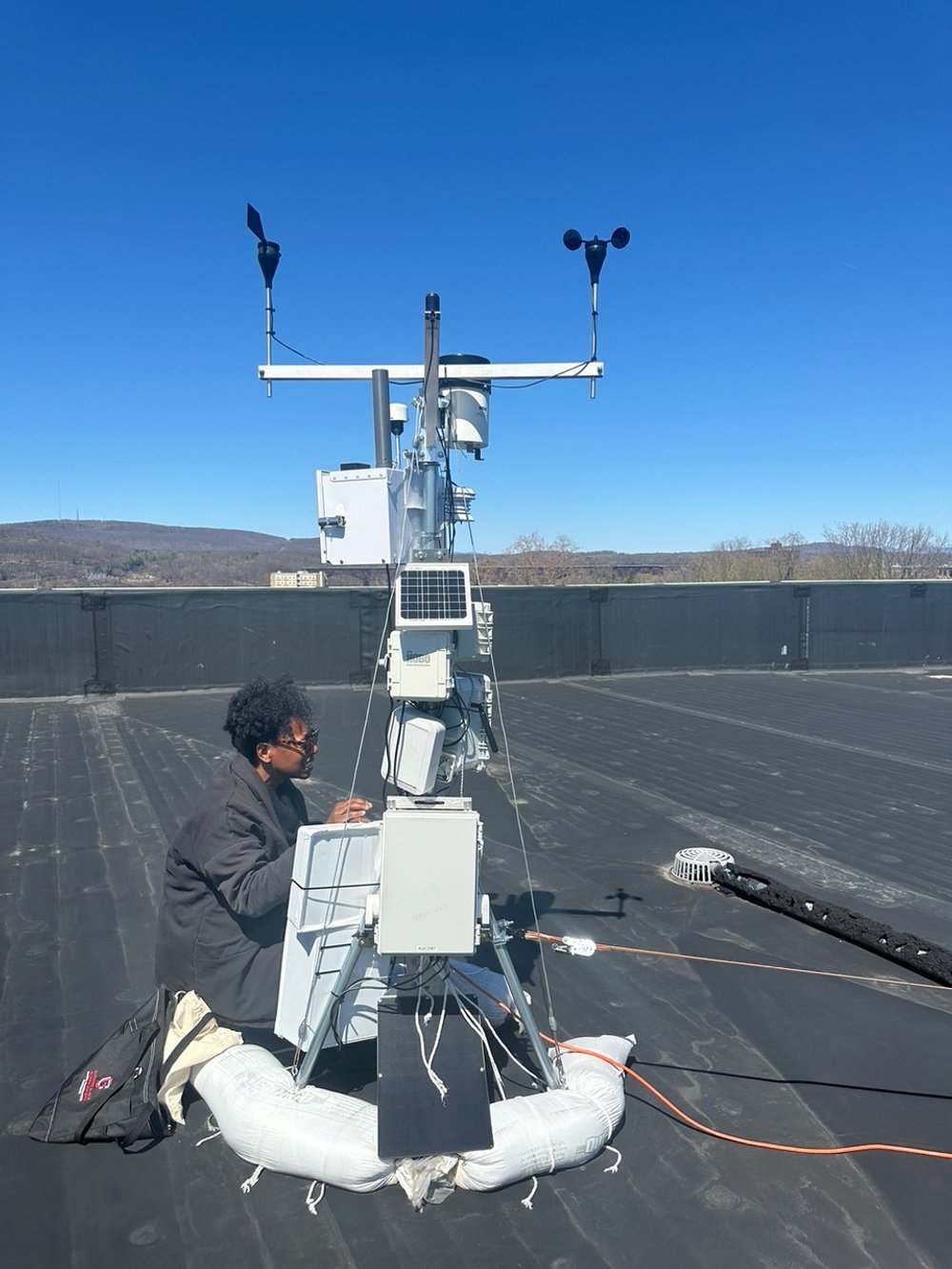Be aware of bats – indoors and out
“I strongly encourage all residents to inspect the area around their air conditioning units. It is important that the gaps around air conditioners are sealed properly with foam or fabric to keep bats out. If a bat is found in your house, and there is a possibility that it had direct contact with a human or pet, then the bat will need to be captured and tested.”
bats play in our environment, New York State Department of Environmental Conservation (DEC) Commissioner Basil Seggos today urged outdoor adventurers to avoid cave and mine sites that may serve as seasonal homes for hibernating bats. Human disturbance is especially harmful to the state's bat populations since the arrival of the disease known as white-nose syndrome, a fungus that has killed more than 90 percent of bats at hibernation sites in New York due to how closely bats congregate in caves during winter months.
"New York's bat populations are highly susceptible to disturbances caused by cave explorers and other outdoor enthusiasts," Commissioner Seggos said. "Even a single, seemingly quiet visit to a cave can cause bats to temporarily increase their metabolism and expend significantly more energy than normal. If cave explorers encounter hibernating bats while underground, I encourage them to leave the area as quickly and quietly as possible. It would be better for the bats if explorers stayed out of the caves altogether."
DEC reminds the public to follow all posted notices restricting seasonal access to caves and mines. When bats are disturbed during hibernation it forces them to raise their body temperature, depleting fat reserves. This stored fat is the only source of energy available to the bats until the weather warms in spring.
Bat Week is observed through Oct. 31, and is organized by representatives from conservation groups and government agencies in the United States and Canada.
Two species of bats are currently protected under federal and State endangered species law. The Indiana bat, which is sparsely distributed across New York, is a federally endangered bat listed before white-nose syndrome began affecting bat populations. The northern long-eared bat is protected as a threatened species under federal and New York State Endangered Species law. The current population for this formerly common bat is approximately one percent of its previous size, making the species the most severely affected by white-nose syndrome. Nonetheless, northern long-eared bats are still widely distributed in New York. Their presence has been documented in most of the 100 or so caves and mines that serve as bat hibernation sites in the state.
The Dutchess County Department of Behavioral and Community Health has also been urging residents to be vigilant to keep bats from entering their home this time of year.
While bats are not aggressive, they do carry disease like rabies. According to the health department’s commissioner, Dr. A. K. Vaidian, removing window air conditioning units during the fall can invite bats indoors, as they can squeeze into the small gaps between the window sashes.
Here are some tips from the health department to prevent bats from entering your home:
When a window is opened to install an air conditioner, it creates a gap between the upper and lower window sashes. Also check that no gaps exist on the sides and bottom of the unit. Bats may gain entry to your house through these gaps. Check to make sure the upper window sash stays in place. Brace it up if needed.
Be sure open windows have tight-fitting and intact screens. Ensure entry doors have a self-closing screen door.
When placing a fan in a window, be sure the screen remains in place.
Keep garage doors and other doors closed when not in use.
Make sure chimney dampers are closed. Seal all unused openings from the house into the chimney.
Be sure access points to non-habitable spaces such as attics, basements, and crawlspaces are kept closed with tight-fitting doors.
If a bat does manage to enter your home, and if there is a chance it came into contact with a human or pet, it will need to be captured and sent to a lab for testing. If you are capable of capturing it yourself, confine the bat to one room by closing all windows and doors, turn on the lights, and wait for the bat to land. Wearing gloves, approach the bat slowly, cover the bat with a coffee can or similar container and slide a piece of cardboard or lid under the can trapping the bat. Tape the cardboard or lid to the container.
To make arrangements to have the bat tested for rabies, call Dutchess County Department of Behavioral & Community Health at (845) 486-3404. If it is after normal business hours, on the weekend, or a holiday, call the Dutchess County Department of Behavioral & Community Health answering service at (845) 431-6465. For more information, visit DutchessNY.gov/Rabies.











